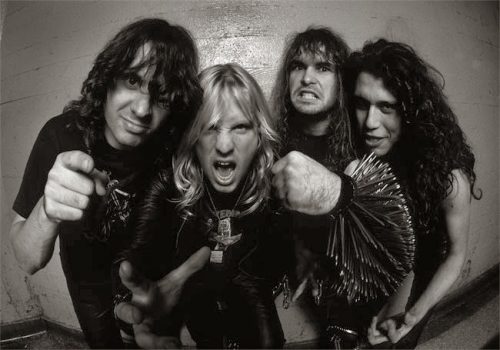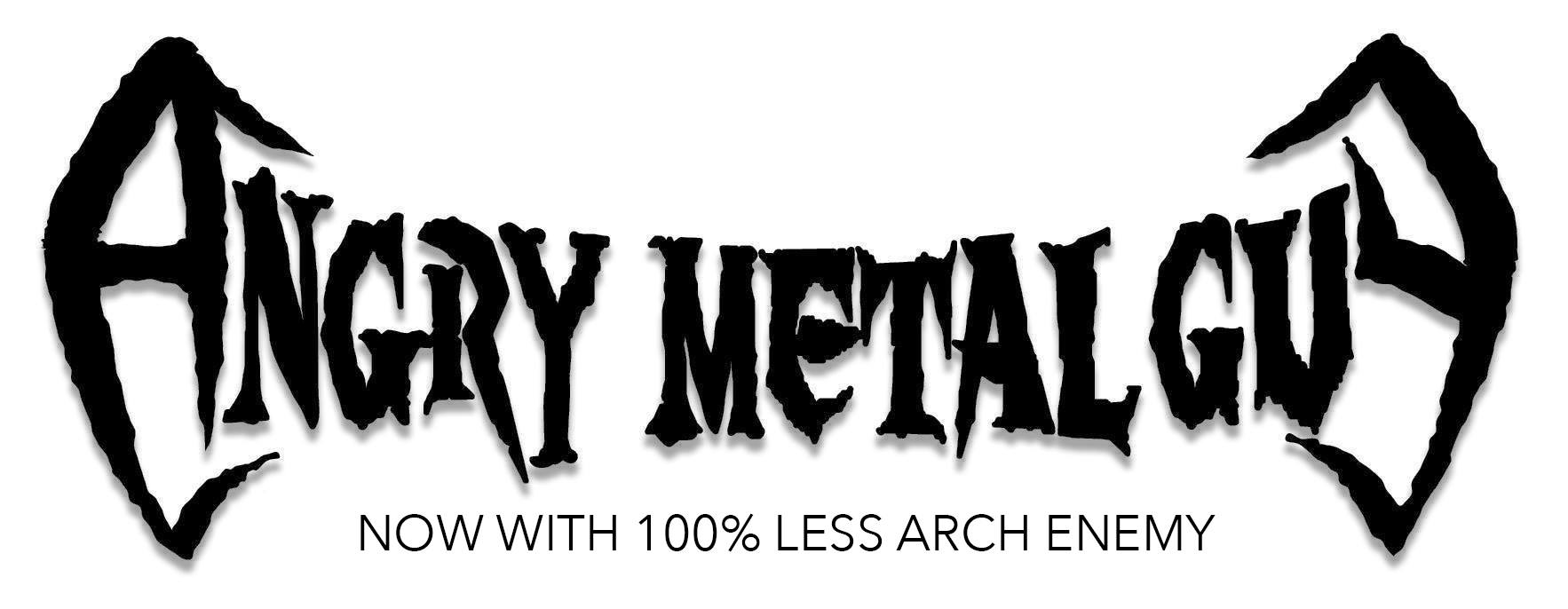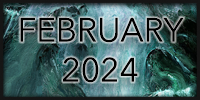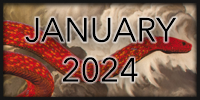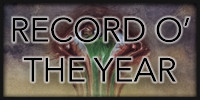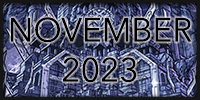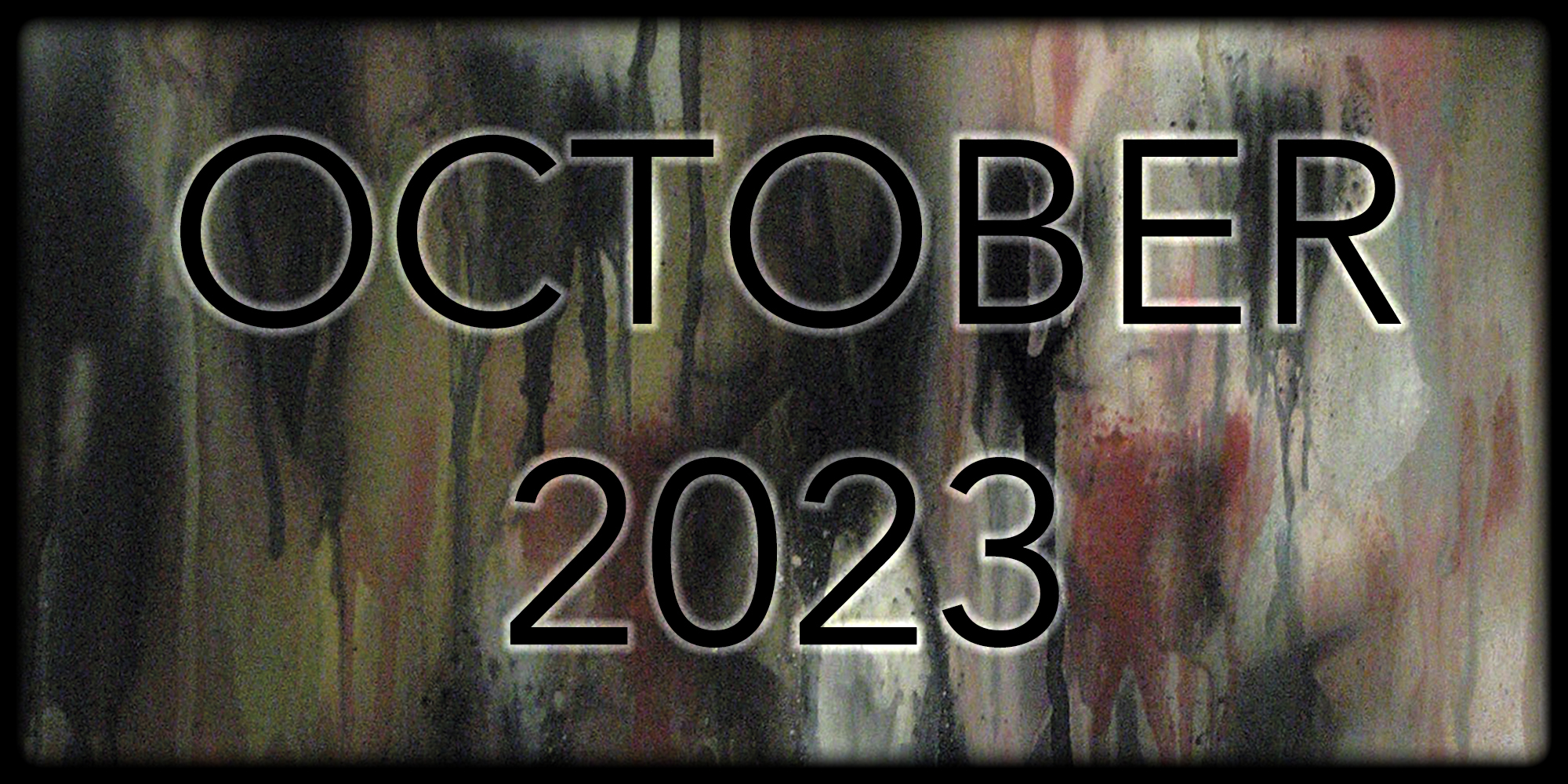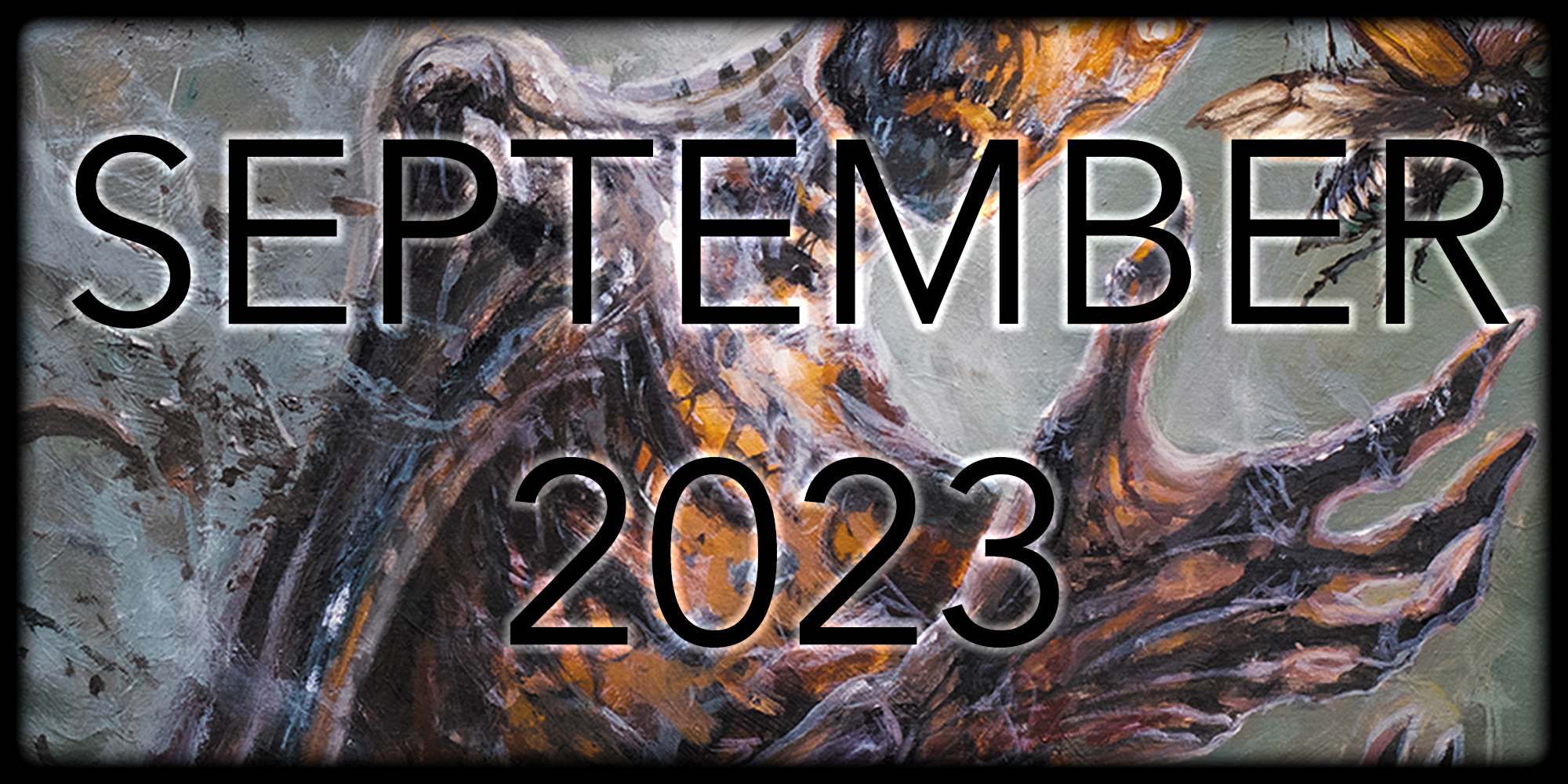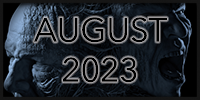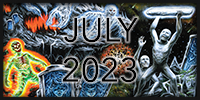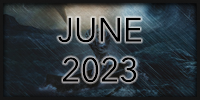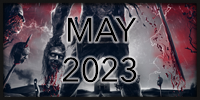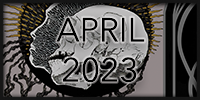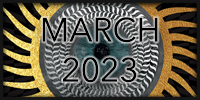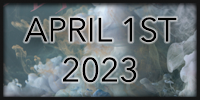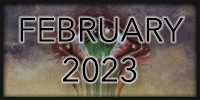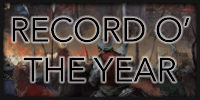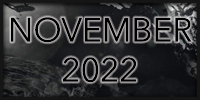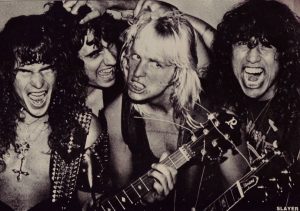 After nearly four decades of aggression, the seminal metal institution known as Slayer is closing their final chapter with a suitably massive tour. Besides attending the tour – which of course I am, twice – what better way to celebrate the thrash titans than going through their entire discography as a fan and trying to order it from Worst to First? Slayer was my true initiation into metal upon hearing them around 2004, and for more than half of my life Slayer has been my favourite band. In a bizarre yet fitting coincidence, the day before AMG Himself asked the staff about this list, a great friend and I spent the night with some Hanneman-inspired Heineken and listened to the entire Slayer studio discography in reverse order, a task that takes roughly seven and a half hours. Since a purely “objective” list would be equal parts impossible and dry, so this list serves more as an exploration of my personal history with Slayer‘s discography and how their records stack up accordingly. I expect disagreement, and am aware that this list is far from unassailable. That said, it’s my sincere hope that you reading find something interesting here and perhaps dust off a copy of a Slayer record you haven’t heard in a while and enjoy it once again. Or, for the uninitiated, start your journey into the oeuvre of the greatest thrash band of all time.
After nearly four decades of aggression, the seminal metal institution known as Slayer is closing their final chapter with a suitably massive tour. Besides attending the tour – which of course I am, twice – what better way to celebrate the thrash titans than going through their entire discography as a fan and trying to order it from Worst to First? Slayer was my true initiation into metal upon hearing them around 2004, and for more than half of my life Slayer has been my favourite band. In a bizarre yet fitting coincidence, the day before AMG Himself asked the staff about this list, a great friend and I spent the night with some Hanneman-inspired Heineken and listened to the entire Slayer studio discography in reverse order, a task that takes roughly seven and a half hours. Since a purely “objective” list would be equal parts impossible and dry, so this list serves more as an exploration of my personal history with Slayer‘s discography and how their records stack up accordingly. I expect disagreement, and am aware that this list is far from unassailable. That said, it’s my sincere hope that you reading find something interesting here and perhaps dust off a copy of a Slayer record you haven’t heard in a while and enjoy it once again. Or, for the uninitiated, start your journey into the oeuvre of the greatest thrash band of all time.
Now that warmed up with the “worsts,”, let’s get to the stronger stuff. We’re well into “necessary listening” territory here, so if any of these have eluded your rotation, fix that immediately. The fun is just beginning, so enjoy the list-based Hell that awaits.
#8. World Painted Blood (2009) – What does Slayer sound like? World Painted Blood, the follow-up to Christ Illusion, answers that question in a wide-ranging fashion, taking a more varied approach to songwriting than its predecessor. The record can sound like a bit of a mess, but this is exactly what makes it so compelling and a better record than God Hates Us All. This is epitomized by Dave Lombardo’s drum performance, which is, even by his standards, wild and nearly unhinged. The fill around the 1:32 mark in “Snuff” is dizzying, especially with the seemingly random hi-hat abuse thrown in. Meanwhile, Kerry King and Jeff Hanneman are all over the place in songwriting, penning some of the band’s fastest and most vicious material since Seasons in the Abyss (“Unit 731,” “Psychopathy Red”), quick and catchy riff-fests akin to Christ Illusion (“Hate Worldwide,” “Snuff”), disturbing and melodic material derived from the dark recesses of South of Heaven (“Beauty Through Order,” “The Human Strain”), and even a punk-meets-Diabolus mashup (“Americon”). It’s interesting to hear Slayer toying with the varied elements of their sound as it’s developed over the years and this less focused and more impulsive sound kept me as a listener on my toes throughout repeated spins.
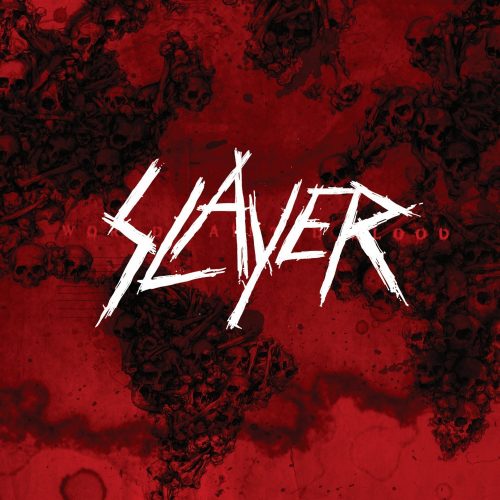
While always interesting and often underrated, World Painted Blood ever so slightly pales in comparison to the records above it due to its lack of a unified vision. It attempts the same general career-spanning ethos as Seasons, but by 2009 Slayer’s past was messier and more varied than in 1990. The slow burn of the title track, bolstered immeasurably by Hanneman’s maniacal avoidance of a “proper” guitar solo, is followed by the blistering “Unit 731” in what sounds like an attempt to recapture the “South of Heaven”/“Silent Scream” magic, but the disparity between the two quality songs is too wide for this to work as effectively. “Americon” is a song I’ve had to acquire a taste for, and while I can enjoy what’s happening there it doesn’t seem to fit anywhere on the record, especially not between the haunting and memorable “The Human Strain” and the excellent thrashing of “Psychopathy Red.” “Hate Worldwide” is a good wildcard in that it could have gone essentially anywhere on the record, and switching it with “Unit 731” makes World Painted Blood’s beginning flow better. These are all minor quibbles, and do little damage overall to the record.
Upon its release in 2009, I skipped school to take a bus to a Sunrise Records in downtown London to make sure I got my hands on the deluxe version of World Painted Blood as soon as I could. It’s fascinated me ever since, and the raw, reedy, and red-hot production manages to suit the material to a tee. I’ve never had a consistent favourite song from World Painted Blood, although I’m unashamed to say that “Playing with Dolls” has always elicited a morbid respect and curiosity on each listen. The couplet of “all alone in my funeral home/there’s just got to be something wrong with me” has been burned into my mind permanently along with the perfect burst of feedback which immediately precedes it. “Beauty Through Order” is unsettling in a way Slayer hasn’t been since Divine Intervention, a sound and atmosphere that was largely absent on Christ Illusion. If nothing else, World Painted Blood demonstrates that Slayer was far from running out of ideas in 2009.
#7. Divine Intervention (1994) -Dark, tight, and focused are prime adjectives for Divine Intervention, an underrated Slayer triumph. Despite not being as fast as Reign in Blood, Divine Intervention is a downright brutal record, exceeded in this regard only by Hell Awaits. Some of this is due to the departure of Dave Lombardo after Seasons and the acquisition Paul Bostaph, a talented drummer with a different style than his inimitable predecessor. Controversial as it may sound, Divine Intervention simply wouldn’t have worked without Bostaph, and the record is his victory as well. Being more restrained and deliberate in style than Lombardo, Bostaph gives Slayer a sound of Spartan discipline, causing Divine Intervention to sound more martial than frenzied. This makes the beginning of opening salvo “Killing Fields” so jarring; the almost obnoxious tempo change from Bostaph’s unaccompanied fill to the song proper is clearly planned to wreak havoc on the listener, and isn’t some botched take that was kept because it sounds interesting.
The contrast between Bostaph and Lombardo is perhaps most apparent on “Mind Control,” the closing number written by Kerry King and Jeff Hanneman. Taking most of its cues from South of Heaven, which was arguably one of the wildest and best performances of Lombardo’s career, Bostaph decides to play things comparatively straight with an emphasis on cymbal work instead of massive, nearly superhuman fills, leaving the chaotic element of the Slayer sound to King and Hanneman’s leads, which don’t disappoint on that front. This isn’t the relentless whirlwind metal reaped when Slayer came to be, but the sound of an unstoppable force in lockstep. Both are exhilarating and compelling, but both are nonetheless different.
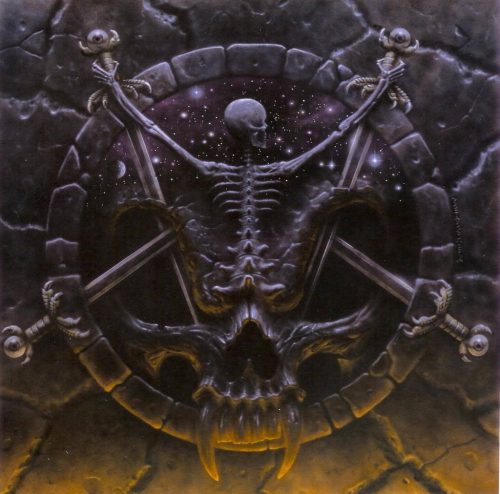
A palpable darkness pervades Divine Intervention, and Bostaph’s less domineering presence helps to emphasize this. The title track is nearly sickening, with pained vocals from Tom Araya and riffs that plumb deeper the abyss explored by “Dead Skin Mask” and “South of Heaven.” The ending lead, comprise largely of strained, held notes, is made all the more haunting by its concluding spasm, which sounds like the last gasp of the narrator. “Serenity in Murder” finds Slayer exploring again the eerie melodicism of South of Heaven, led by a stellar vocal performance by Tom Araya. The verses sound nearly meditative, which leads to the harsh yet deliberate chorus, and later to a violent, thrashing climax both vocally and instrumentally. A tremendous union of music and lyrics, “Serenity in Murder” is a less obvious Slayer highlight.
Despite the high level of quality throughout and a complete lack of duds, Divine Intervention doesn’t contain a bona fide Slayer anthem like “War Ensemble” or “Disciple” except arguably the excellent “Dittohead,” which makes sense of its occasional lack of real representation in live sets. I return to my beginning adjectives of dark, tight, and focused; Divine Intervention almost isolates itself from the rest of Slayer’s discography with its unique sound, and is best enjoyed straight and without any outside elements. While “Hell Awaits” leads perfectly into “The Antichrist” on the invaluable Decade of Aggression, nothing on Divine Intervention has that flexibility. Divine Intervention is its own beast, a marked departure from its immediate predecessor and successor, and a special moment in Slayer’s history. A top-shelf metal record and a highly respectable Slayer release.
#666. Hell Awaits (1985) – By far the most interesting debut-to-sophomore development of the Big Four, it’s hard to believe anyone was prepared for Hell Awaits when it dropped a mere two years after Show No Mercy. The speed metal and NWOBHM influences are all but gone, replaced with something that’s heavier than Mantas and Possessed, and despite not coining the term like the latter band, sounds like death metal in a truer form than either. Hell Awaits is neck-in-neck with Reign in Blood for the most extreme thing Slayer has ever put to tape. It doesn’t match the coherence, focus, and viciousness via velocity of its successor, but is instead chock-full of legitimately evil riffs, horrific lyrics, and some seriously varied aural annihilation. Hell Awaits is a classic, arguably the first true extreme metal record, and would go on to influence that subgenre up until now and well into tomorrow.
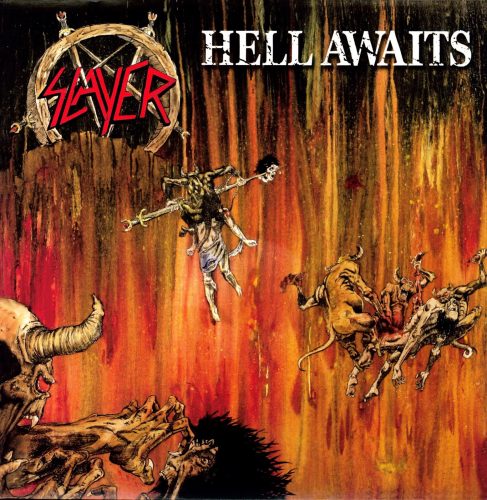
The justly ubiquitous title track is a thrash classic for good reason – it’s a show-stopping opener with approximately zero seconds wasted. Tom Araya’s manic phrasing in the prechorus just barely keeps up with Kerry King and Jeff Hanneman’s tremolo, and this part has always been a personal highlight of Slayer’s oeuvre for me. “Hardening of the Arteries” doesn’t seem to get a lot of praise, but it’s a song of two parts, one which anticipates Reign in Blood and one which is thematically brilliant. The ceaseless intensity of the first part (0:00-2:08) could have fit neatly between “Reborn” and “Epidemic” should Slayer have chosen to hold onto the riffs, but fortunately the second part (2:08-3:55) makes the whole endeavour fit perfectly into Hell Awaits. Reprising the opening riff of the title track, the “welcome back” which introduces the riff at the start of the record makes more sense. The torments of Hell sound endless, eternally recurring while the screams of the damned echo through the atmospheric playing of King and Hanneman over top.
Compositionally, Hell Awaits is the most adventurous Slayer record by a considerable margin. This means that it lacks the immediacy of some later records, but retains the staying power in spades. Ranking Hell Awaits is therefore difficult, because since I first heard Slayer in the early 2000s, I’ve associated that immediacy with their sound. As I grew older, more complex and textured Slayer masterpieces like “Crypts of Eternity” and “Necrophiliac” made more sense and left me countless treasures to unearth upon close listens. Truthfully, this type of list inevitably becomes an explanation of emotional and aesthetic impact instead of a completely sober attempt at objective rankings at a certain point, and this is my time to take that plunge in its full glory. To the reader, I leave you with the exhortation to sit down with Hell Awaits and listen – really listen – if you haven’t done so in the last six months or more. It’s a timeless classic which still holds its extremity today through sheer compositional talent and exceptional performances.
#5. Seasons in the Abyss (1990) – Thumbing through the used discs at Grooves Records, an institution in Ontario’s London, I said instinctively to my younger brother: “I wonder if they have any Slayer?” Moments later, Seasons in the Abyss crashed down in front of me; the cashier had just received and priced a used copy (it was $8.00, if you’re wondering). My Slayer collection pre-2006 consisted solely of Reign in Blood and the Still Reigning DVD, so I wasn’t sure which record I was looking or hoping for. Conveniently, this is the Slayer record to listen to if you’re not sure exactly which type of Slayer you want to hear. I’ve often considered Seasons the synthesis of Reign in Blood (thesis) and South of Heaven (antithesis), but this simplified Hegelian analysis sells it a tad short. In reality, it’s a sweeping musical review of Slayer’s career up to 1990, and the exact point where Slayer effectively stopped massively innovating after doing so for four albums already. To be clear, this doesn’t mean that the band was out of ideas. Rather, it means Slayer decided to tinker with the myriad musical ideas they’d unearthed and paved the way for, giving us a record that offers a great overall picture of what Slayer sounds like.
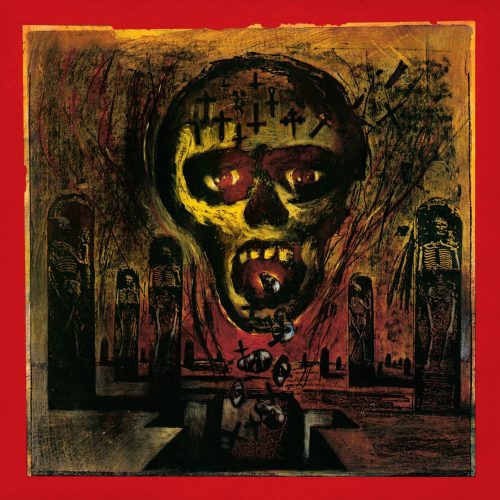
Seasons contains three all-time classics, placed interestingly at the very beginning (“War Ensemble”), the exact middle point (“Dead Skin Mask”), and the very end (“Seasons in the Abyss”). That’s all I have to say about these songs, as even the most jaded metalhead knows them by heart in riffs and lyrics as they’re timeless classics. While not every song here had the same impact, that’s no knock against their quality. “Blood Red” sounds like a darker version of the NWOBHM influences on Show No Mercy, with an unforgettable main riff that can be adequately described as “Iron Maiden goes to Hell.” “Spirit in Black” has always been a personal favourite with its impeccable songwriting in both the riffing and structure departments along with some great lead work. Reign in Blood gets its due most noticeably on “Hallowed Point,” which is the closest approximation of the aural chaos unleashed there. King and Hanneman’s solos recall 1986, and the driving midsection is nearly as effective as the beginning of “Jesus Saves” in terms of forceful contrast. Hell Awaits is least adequately represented, but the sheer heaviness of that record is heard in the oft-overlooked and perpetually underrated “Born of Fire” which is probably the most extreme song on offer here.
Seasons in the Abyss is a songwriter’s record, one which gets better with closer listens. The two different vocal phrasings in the verses of “Temptation” demonstrate the versatility of the riffs, while “Skeletons of Society” is a clinic on how to write a simple, heavy chug that worms its way into the mind and takes up residence there forever. Nonetheless, there are better Slayer records than Seasons. It doesn’t have quite the same impact as some of its predecessors due to it being a more polished affair overall, and there’s one lesser point in “Expendable Youth,” which despite being good isn’t quite on par with the rest of Seasons. While it doesn’t drag the album down significantly and I wouldn’t cut it given the opportunity, it’s one of those noticeable warts that prevents Seasons from placing higher in the list here. This is a minor quibble though, as Slayer’s fifth is a great record that serves as a near-perfect introduction to the band and their multifaceted approach.
